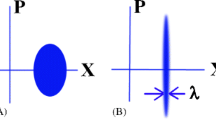Abstract
The phenomenon of synchronization of contraction rhythms was investigated on isolated protoplasmic strands of Physarum polycephalum. The strands were mounted as (gymnastic) trapezes; the contraction activities of the arms were measured independently under isometric conditions; and the connecting middle part of the arms was treated in different ways to block the signal transmission between the arms. Experiments for testing the influence of different chemicals on signal transmission demonstrated that whenever a substance blocked signal transmission it also disturbed the normal oscillatory contraction activity of a single strand, the endoplasmic streaming, and the normal architecture of the strand. No substance inhibited the transmission of the synchronizing factor specifically. As a depolarizing medium, 70 mM KCl solution did not hinder phase synchronization. On the other hand, compression of the middle part with a glass needle immediately led to dissynchronization as soon as the endoplasmic flow could not pass the point of constriction. Gelation of the endoplasm by a vibrating glass needle placed at the surface of the middle part had the same effect. It is concluded that a bioelectric continuance of the plasmalemma is not sufficient for signal transmission. In contrast, an intact endoplasmic flow appears to be obligatory. According to the experimental data presented, an electrical coupling responsible for phase synchronization between the two arms seems to be unlikely. The unknown synchronizing factor is transported via endoplasmic flow, i.e., the endoplasmic stream seems to present the pacemaker of the oscillatory contraction activity.
Similar content being viewed by others
References
Achenbach, F., Achenbach, U. (1979) Oscillating contractions in protoplasmic strands of Physarum: Effects of externally applied ouabain, sodium-, potassium- and calcium-ions. Cell Biol. Int. Rpts. 3, 141–149
Achenbach, F., Achenbach, U., Wohlfarth-Bottermann, K.E. (1979) Plasmalemma invaginations, contraction and locomotion in normal and caffeine-treated protoplasmic drops of Physarum. Eur. J. Cell Biol. 20, 12–23
Achenbach, U., Wohlfarth-Bottermann, K.E. (1980a) Oscillating contractions in protoplasmic strands of Physarum: Mechanical and thermal methods of phase shifting for studying the nature of the synchronizing factor and its transmission. J. Exp. Biol. 85, 21–32
Achenbach, U., Wohlfarth-Bottermann, K.E. (1980b) Synchronization and signal transmission in protoplasmic strands of Physarum. Reaction to varying temperature gradients. Planta 150, 180–188
Achenbach, U., Wohlfarth-Bottermann, K.E. (1980b) Synchronization and signal transmission in protoplasmic strands of Physarrum. The endoplasmic streaming as a pacemaker and the importance of phase deviations for the control of streaming reversal. Planta 151, 584–594
Burr, H.S. (1955) Certain electrical properties of the slime mold. J. Exp. Zool. 129, 327–342
DeMello, W.C. (1979) Effect of 2–4-Dinitrophenol on intercellular communication in mammalian cardiac fibres. Pflügers Archiv 380, 267–276
Deth, R., Casteels, R. (1977) A study of releasable Ca2+-fractions in smooth muscle cells on the rabbit aorta. J. Gen Physiol. 69 (4), 401–416
Dierkes, U. (1980) Aufnahme, intrazelluläre Lokalisation und Abgabe von Calcium bei dem azellulären Schleimpilz Physarum polycephalum. Inaugural-Dissertation der Math. Nat. Fak. der Universität Bonn
Götz von Olenhusen, K., Wohlfarth-Bottermann, K.E. (1979) Effects of caffeine and D2O on persistence and de novo generation of intrinsic oscillatory contraction automaticity in Physarum. Cell Tissue Res. 197, 479–499
Hayama, T., Tazawa, M. (1978) Cessation of cytoplasmic streaming accompanying osmosis-induced membrane depolarization in Nitella flexilis. Cell Struct. Funct. 3, 47–60
Kamiya, N., Abe, S. (1950) Bioelectric phenomena in the myxomycete plasmodium and their relation to protoplasmic flow. J. Colloid Sci. 5, 149–163
Korohoda, W., Rakoczy, L., Walczak, T. (1970) On the mechanism of protoplasmic streamings in the plasmodia of myxomycetes. Acta Protozool. 7, 363–374
Korohoda, W., Wohlfarth-Bottermann, K.E. (1976) Effects of relaxation and contraction stimulating solutions on the structure of cytoplasmic fibrils in plasmodia of Physarum polycephalum. Acta Protozool. 15, 195–202
Matveeva, N.B., Beylina, S.I., Teplov, V.A., Layrand, D.B. (1979) Active proton transport across the surface membrane of the slime mold Physarum polycephalum. Acta Protozool. 18, 169–171
Meyer, R., Stockem, W. (1979) Studies on microplasmodia of Physarum polycephalum V: Electrical activity of different types of microplasmodia and macroplasmodia. Cell Biol. Int. Rpts. 3, 321–330
Otter, T., Salmon, E.D. (1979) Hydrostatic pressure reversibly blocks membrane control of ciliary motility in Paramecium. Science 206, 358–361
Parducz, B. (1952) Eine neue Schnellfixierungsmethode im Dienste der Protistenforschung und des Unterrichts. Ann. Mus. Nat. Hung. 2, 5–15
Tasaki, I., Kamiya, N. (1950) Electrical response of a slime mold to mechanical and electrical stimuli. Protoplasma 39, 333–343
Wohlfarth-Bottermann, K.E. (1974) Plasmalemma invaginations as characteristic constituents of plasmodia of Physarum polycephalum. J. Cell Sci. 16, 23–37
Wohlfarth-Bottermann, K.E. (1979) Oscillatory contraction activity in Physarum. J. Exp. Biol. 81, 15–32
Wohlfarth-Bottermann, K.E., Götz von Olenhusen K. (1977) Oscillating contractions in protoplasmic strands of Physarum: Effects of external Ca2+-depletion and Ca2+-antagonistic drugs on intrinsic contraction automaticity. Cell Biol. Int. Rpts. 1, 239–247
Yoshimoto, Y., Kamiya, N. (1978) Studies on contraction rhythm of the plasmodial strand. III. Role of endoplasmic streaming in synchronization of local rhythms. Protoplasma 95, 111–121
Zimmermann, U., Becker F. (1978) Generation of action potentials in Chara corallina by turgor pressure changes. Planta 138, 173–179
Author information
Authors and Affiliations
Rights and permissions
About this article
Cite this article
Achenbach, U., Wohlfarth-Bottermann, K.E. Synchronization and signal transmission in protoplasmic strands of Physarum . Planta 151, 574–583 (1981). https://doi.org/10.1007/BF00387437
Received:
Accepted:
Issue Date:
DOI: https://doi.org/10.1007/BF00387437




